In every share purchase agreement there are various provisions which allocate the risk associated with taxes amongst the buyer and the seller. While each agreement is unique in its details, reflecting the underlying objectives of the parties, there are general provisions, concepts and themes which can be seen in most share purchase agreements in Canada. One such theme is that buyers do not want to be responsible for taxes that relate to the target company’s pre-closing period.
This article discusses the manner in which share purchase agreements typically make the seller liable for taxes that relate to a pre-closing tax period: namely through net working capital and a separate tax indemnity.
Net working capital
The purchase price for the shares of a target company is typically based on either the target’s financial statements as of a specified date prior to closing or an “averaging” of the historical performance of the business (according to an agreed formula) and often with reference to “EBITDA” (earnings before interest, taxes, depreciation and amortization).
Such agreed purchase price is typically cash-free and debt-free and assumes that the business will have a customary amount of “working capital” to permit the business to operate in the ordinary course after closing. The buyer and the seller typically agree upon a “target working capital” number in advance of closing which represents the operating liquidity needed in order for the target company to maintain its normal course operations. In order to arrive at such number, in many cases, the parties will apply a base calculation of current assets less current liabilities in order to arrive at the fixed number.
The purchase agreement definition of working capital will be some variant of current assets less current liabilities subject to explicit inclusions and exclusions, some of which may be related to the results of diligence performed on the target company. It is at this stage that it is critical to ensure that the relevant definition is consistent with the previous formulation of the target working capital figure. In terms of taxes:
- Deferred tax assets and liabilities tend not to be included in (and, in fact, are often explicitly excluded from) working capital definitions (as those are accounting concepts which generally reflect timing differences that the parties agree should not be reflected in the purchase price); while
- General tax liabilities or “taxes payable” tend to be included in such definitions.
Assuming that general tax liabilities were originally accounted for in the “target working capital” determination, it is accurate to state that the initial purchase price for the shares was essentially reduced based upon the anticipated unpaid taxes of the target company.
If unpaid taxes were not accounted for in the definition of target working capital, the initial purchase price would not have taken these anticipated liabilities into account and, as a consequence, it may be more appropriate to have taxes excluded from the working capital definition and instead have such taxes result in a dollar-for-dollar reduction of the purchase price through some other mechanism (for example, by including such taxes in the definition of “indebtedness”).
The purchase agreement will typically require working capital to be determined and prepared as of the closing date of the transaction and be compared to the target working capital figure.
The purchase price payable by the buyer to the seller is then typically adjusted (i) upwards if the working capital as of the closing date exceeds the target working capital, or (ii) downwards if the working capital as of the closing date is less than the target working capital. This final adjustment typically occurs between 60-90 days following closing once a full calculation can be performed.
As noted, general tax liabilities are typically included in the definition of working capital. As such, once working capital is determined as of the closing date, any tax liabilities of the target which will be payable within one year (which should cover any additional taxes attributable to a period prior to closing) should be reflected on the taxes payable line item of the working capital calculation.
Accordingly, these tax liabilities will effectively reduce the final purchase price payable by the buyer to the seller. It is this rather discrete method by which anticipated pre-closing taxes of a target company are accounted for in many share purchase agreements in Canada.
Tax indemnity
As noted, all unpaid tax liabilities attributable to a pre-closing period of the target company should be reflected in the working capital. However, in order to provide sufficient protection for a buyer in respect of unexpected tax liabilities that relate to a pre-closing period, most purchase agreements include some form of a tax indemnity which specifically covers this risk. This indemnity is sometimes found in its own section of the purchase agreement although it can also be built into the general indemnity provisions of the purchase agreement.
A typical tax indemnity will provide that the seller agrees to indemnify the buyer for all taxes of the target company that are attributable to a “pre-closing period” and in respect of the pre-closing portion of a “straddle period” (up to and including the closing date). These two concepts can be defined as follows:
- A pre-closing period is generally any period which ends on or before the closing date and would include all relevant Canadian income tax periods as the target company will be deemed to have a year-end as a result of the share sale.
- A straddle period is generally a period which includes but does not end on the closing date and, therefore, is designed to capture tax periods which straddle the closing date (such that the seller would be responsible for the pre-closing portion only). This concept is particularly relevant for non-income taxes and non-Canadian income taxes of the target company.
The obligation of the seller to indemnify the buyer in respect of taxes will generally be net of any taxes that are part of the final working capital calculation (as discussed above). This prevents the double counting that would occur if the seller were required to indemnify the buyer in respect of a tax liability even though the purchase price had already been reduced to reflect that same liability.There may also be certain baskets, caps and limitation periods that apply in respect of the tax indemnity claims under the purchase agreement. These are frequently applied in a different manner to the tax indemnity than to the other ordinary course indemnities (including for breaches of representations and warranties) in the purchase agreement.
Tax representations and warranties
It may be surprising to some, but the tax representations and warranties do not play a critical role in indemnifying the buyer for any pre-closing tax liabilities of the target company. While a breach of the tax representations may result in an economic loss in respect of a pre-closing period, any indemnification related to this breach is likely, at best, duplicative to that found under the tax indemnity (in most cases, it would be preferable for a buyer to seek indemnification under the tax indemnity rather than breach of the tax representations).
With that being said, the tax representations and warranties do fulfil other objectives of the buyer including a diligence function, providing a “walk away” right if there is material inaccuracy in the representations found between signing and closing and, potentially, providing an indemnification right in respect of taxes which arise in a post-closing period.
John O'Connor is tax counsel in the tax group of Stikeman Elliott LLP with a practice which focuses upon all areas of corporate tax. John is a frequent speaker and writer on tax matters.
Photo credit / Feodora Chiosea ISTOCKPHOTO.COM
Interested in writing for us? To learn more about how you can add your voice to The Lawyer’s Daily, contact Analysis Editor Richard Skinulis at Richard.Skinulis@lexisnexis.ca or call 437- 828-6772.
< Back to In-House Counsel Resource Page
The Lawyer's Daily
This article was originally published by The Lawyer's Daily -- providing Canadian legal news, analysis and current awareness for lawyers and legal professionals who need a real-time view on the shifting legal landscape.


